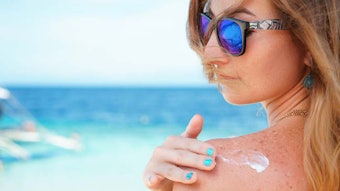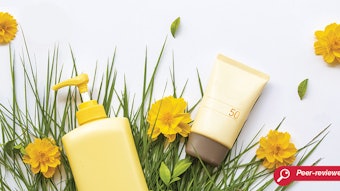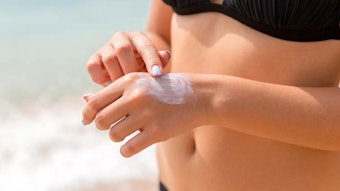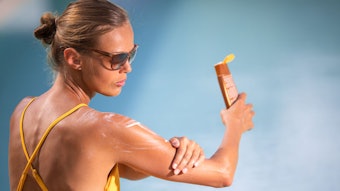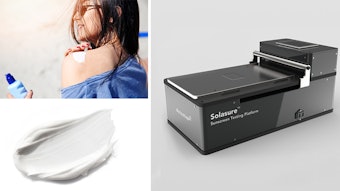It is accepted that typical sunscreen application is based on volume, not mass. For example, the Australian Cancer Council recommends that adults apply about a half teaspoon of sunscreen to the face, neck and ears; a teaspoon to each arm and leg; and a teaspoon each to the front and back of the torso.1 However, when the efficacy of sunscreens is evaluated, testing is carried based on a mass, not volumetric, application standard. For example, in vivo SPF and in vitro UVA test specifications require that the sunscreen be applied by mass of the layer per unit area.2–5 Since the attenuation of incident solar radiation through a sunscreen layer at a particular wavelength depends directly on the thickness of the layer (see Beer’s Law), not the mass applied per unit area, this procedure is incorrect and has no scientific basis.
The reason for adopting a testing standard based on mass rather than volume is historical. Until recently, nearly all sunscreens have employed only organic UV absorbers to attenuate UV radiation. Such sunscreens invariably exhibit product densities close to 1 g/cm3. With a density of 1, the application rate of 2 mg/cm2, specified for in vivo SPF testing by the various regulatory bodies,2–4 corresponds to a 2 μL/cm2 volumetric application rate and a uniform 20 micron film thickness. In the past, many studies6–9 as well as the US Food and Drug Administration (FDA)10 have used 2 μL/cm2 and 2 mg/cm2 interchangeably, even referring to thicknesses in units of mg/cm2.



